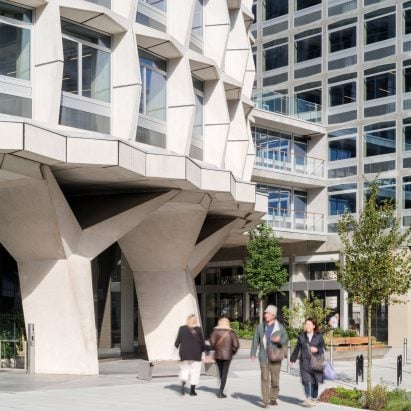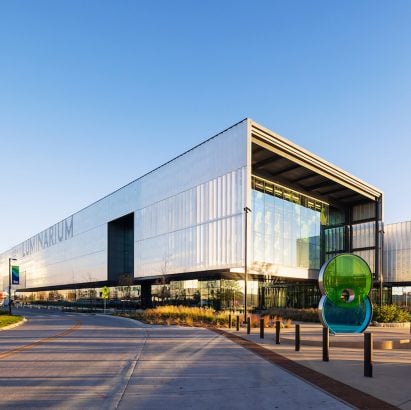Fly green or die: EU urged to stop reforming and start investing in aviation
The industry has had enough of new regulations to reduce emissions. Now it wants the money to do so.
This article is the product of a POLITICO Working Group presented by GE Aerospace.
BRUSSELS — After years of legislation and target-setting to reduce aviation emissions, the sector has a message for the EU: Give us a break!
Unlike carmakers, aviation representatives are not asking for green targets to be watered down. They are simply fed up with decades-long roadmaps to slash emissions from aviation, which account for about 4 percent of the bloc’s CO2 pollution. They’re asking for an end to reform and lots more cash.
Instead of new green regulations, “what I would rather expect is to see new programs, new projects that would support the development of the sector and help bring the price down,” said Piotr Dziubak, head of the international affairs unit of the aviation department at the Polish ministry of infrastructure.
Brussels is aware of the issue.
But aviation has a problem going green: It’s far more difficult to switch fuels or technology than in cars, for safety reasons. After all, a car with a faulty engine simply rolls to a stop, while an airplane falls from the sky.
The industry says a flood of investment is needed to make experimental technologies viable — from sustainable aviation fuel (SAF) to rethinking air-traffic control to allow better routes, battery-powered aircraft, and radical redesigns of engines and airframes to squeeze out further efficiency gains.
The immediate focus is an effort to switch from fossil kerosene to SAF, an alternative made from non-petroleum feedstocks that emits about 20 percent as much CO2 as traditional fuels.
ReFuelEU — legislation passed last year — requires airline fuel suppliers to incorporate 2 percent SAF by 2025, 6 percent by 2030 and 70 percent by 2050.
But SAFs are currently expensive and aren’t made in sufficiently large quantities to hit the EU’s targets.
“If you want to produce SAF on an industrial scale, you’re not talking about investments of hundreds of millions of euros, you’re talking about billions,” said Alexander Kueper, vice president for renewable aviation at Finnish fuel producer Neste.
“Where will this money come from? That’s really where I see a big challenge,” Kueper said.
Even a green NGO like Transport & Environment (T&E), not exactly a friend of the airline industry, agrees on the need to increase investment in things like e-fuels — SAFs produced by using renewable electricity, water and CO2 pulled from the atmosphere — to make the sector more sustainable.
“Certain types of SAF like e-fuels need a market boost, because the market is nascent. This is where investment — both private and public — can fill the first-mover risk gap,” said Jo Dardenne, aviation director at T&E.
Pressure on Brussels is growing from the industry and from governments. All of which want Brussels to get involved to leverage money for research and development for green aviation tech.
“For sure every member state, including Poland, will have some money for that kind of investment, but it will be rather small, fragmented money and it will not bring the result that we expect,” said Dziubak.
European Commission President Ursula von der Leyen, recently reelected to another term, has announced that a Clean Industrial Deal will be proposed in the first 100 days of the new mandate.
Where to start?
Not all aviation is equally responsible for climate change.
Eurocontrol, the European air-traffic management body, estimates that long-haul routes of more than 3,000 kilometers, which account for just 10 percent of European flights, are responsible for more than half of CO2 emissions from European aviation.
In a yet-to-be-published study, Eurocontrol calculated the amount of energy needed to produce enough SAF to power all long-haul flights to hit the 70 percent target by 2050. “It’s a lot. It’s 73 nuclear reactors” of energy output, said Marylin Bastin, acting director of European green sky at Eurocontrol.
“The issue is also the price,” said Dziubak, as “at the moment SAF is three to four times more expensive than jet kerosene.”
SAF is not the only effort to decarbonize aviation.
Optimizing air traffic management (ATM) could also reduce emissions. For operational and economic reasons, airlines often zig-zag across Europe. Flight paths could instead be optimized to make routes shorter, less polluting and cheaper.
“If you consume less fuel, you are just emitting less,” Bastin said.
Tweaking ATM is part of a broader push to make existing technologies more efficient.
“The current generation of aircraft engines is 40 percent better in efficiency than the ones we developed in the 1980s,” said Luca Bedon, head of research and technology at Avio Aero, a GE Aerospace company. Each new generation of airplanes, he added, is “10-15 percent better than the previous” in terms of fuel efficiency.
“The plan is to really invest in technology that will deliver the next-generation propulsion system to be even more efficient than today,” Bedon said.
It’s part of a broader rethink of aviation.
T&E has a three-part mantra: “Avoid, shift, decarbonize,” Dardenne said. “Reduce the demand that you know you can reduce. Shift it to other modes of transportation where you can, and then decarbonize.”
Global view
But all of those efforts cost money, and the European aviation sector worries the regulations it faces could make it uncompetitive. While EU airlines are under pressure to cut emissions, in other — fast-growing — parts of the world, aviation is exploding.
Last year, the Indian airline IndiGo set a new record for the largest single purchase in commercial aviation history with an order for 500 Airbus A320s.
Dubai International Airport — already the world’s busiest by international passenger traffic and second-busiest by total passengers — recently unveiled a $35 billion expansion plan for the next decade.
This article is the product of a POLITICO Working Group presented by GE Aerospace and was produced with full editorial independence by POLITICO reporters and editors. Learn more about editorial content presented by outside advertisers.
What's Your Reaction?


























:quality(85):upscale()/2024/09/09/785/n/1922283/901e710666df358b373de2.40207443_.jpg?#)
:quality(85):upscale()/2024/07/23/904/n/1922283/dc92642c66a0159ee98db4.72095370_.jpg?#)
:quality(85):upscale()/2024/07/10/842/n/1922283/8fb902af668edd399936b2.17277875_.jpg?#)
:quality(85):upscale()/2024/06/07/909/n/1922283/82a389f8666372643f2065.06111128_.jpg?#)
:quality(85):upscale()/2024/06/07/726/n/1922283/10bee64e666334778cf548.63095318_.jpg?#)
:quality(85):upscale()/2025/01/08/844/n/1922398/cde2aeac677eceef03f2d1.00424146_.jpg)
:quality(85):upscale()/2024/11/27/891/n/1922398/123acea767477facdac4d4.08554212_.jpg)
:quality(85):upscale()/2024/12/02/919/n/1922398/2b4b75f6674e20edcc99c3.42112799_.jpg)
:quality(85):upscale()/2024/10/29/690/n/1922398/e9bec6b46721006258d949.01358236_.jpg)
:quality(85):upscale()/2024/10/09/794/n/1922283/3f35cdf56706c5a92ddff9.14514426_.jpg)








:quality(85):upscale()/2024/02/21/214/n/1922283/8118faa965d6c8fb81c667.06493919_.jpg?#)


